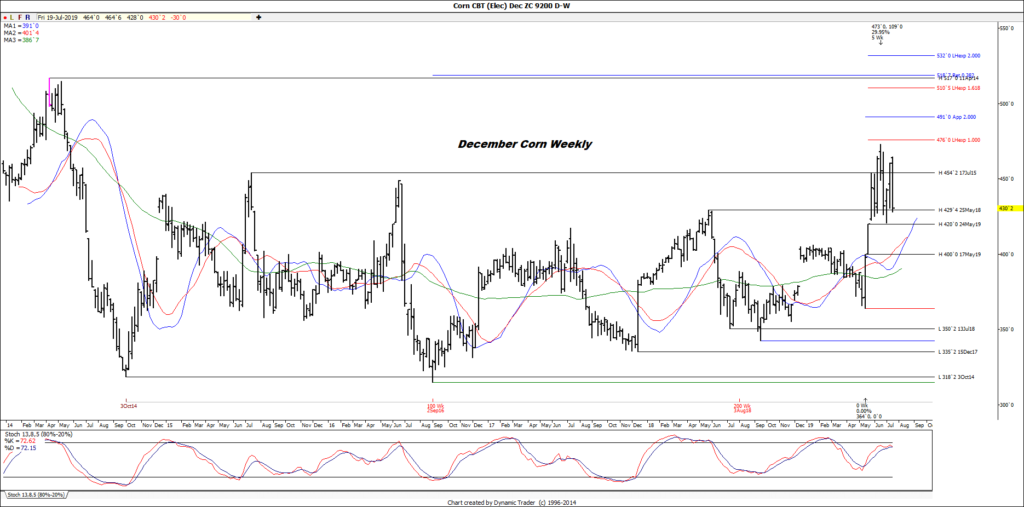By: Dan Hueber –
This will go down as one of the roughest weeks we have experienced this year in the grain and soy markets, with corn suffering the most significant losses. Do keep in mind that we have experienced larger volatility, which is a two-edged sword as it translates into more opportunity on one side but the risk of more risk and bigger swings on the other. If we were to finish the week at the morning break, November beans would be down 23-cents, December wheat down 28-cents and December corn down 30-cents. Do keep in mind that December corn remains contained within the same range between roughly 4.20 and 4.70 that we have established since prices gapped higher at the end of May, and I suspect we could have several more weeks of chopping between those two parameters are we learn more about the crop this year. That said, weekly indicators are on the cusp of rolling over to the downside, and if you recall, we were looking for the corn market to peak at the 180-week cycle count which fell back on the first week of this month, and it is beginning to appear that the shocking June acreage report may have caused us to peak a week earlier. Looking forward, the next big weekly cycle counts in corn fall on the week ending September 20th and then the week ending December 6th. Could be good dates to mark on your calendars.
One category that I overlooked on the export sales report yesterday was sorghum. It turned out that China was not wholly absent from our markets (outside of canceling previous purchases) as they made the largest purchase of that commodity since April; 51,072 MT. Keep in mind this is in spite of the 25% tariff. Granted, not an earth-shattering purchase and I doubt will make President Trump retract his comments about China not living up to purchase promises, but would at least seem to suggest that there is a willingness to do business with the U.S.
Also dragging on the corn market this week has been dour reports from the ethanol sector. Margins at a four-year low and inventories at the highest level since 2010 does not add up to a promising outlook for corn demand. You can expect a cutback in production and possibly more than usual “maintenance” to take place during the waning months of the summer. One has to imagine that the increased number of blending waivers that have been issued by the EPA is creating a negative impact.
Syngenta released updated financials this morning, and it comes as no shock that the numbers are lower. Sales for the first half of this year were down 7% to $6.8 billion, and net income was down 34% to $798 million. The rough weather in the United States and Australia, as well as the trade disputes with Mexico and China, were cited as the culprits.
I would like to believe the rebound we have witnessed this morning is indicating that bulls have been punished enough at this point and that as we move out to August, prices will have the ability to rebound once again. That said, until we find a new stimulus, this market could remain range-bound for the time being.
